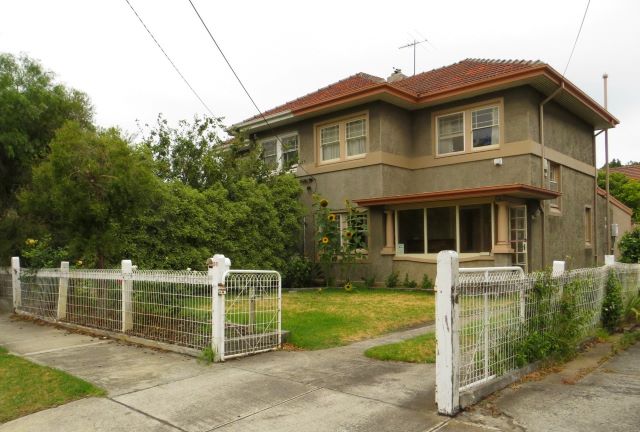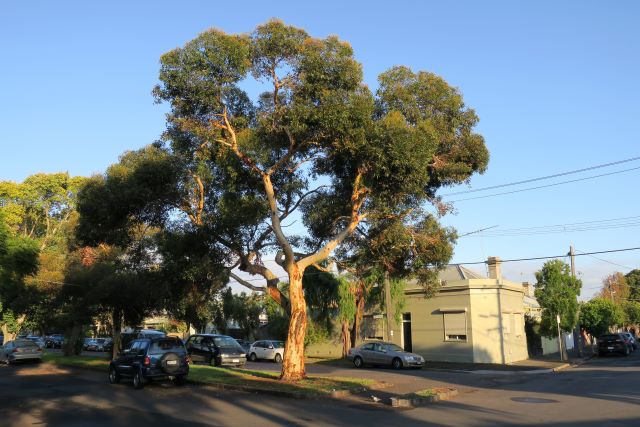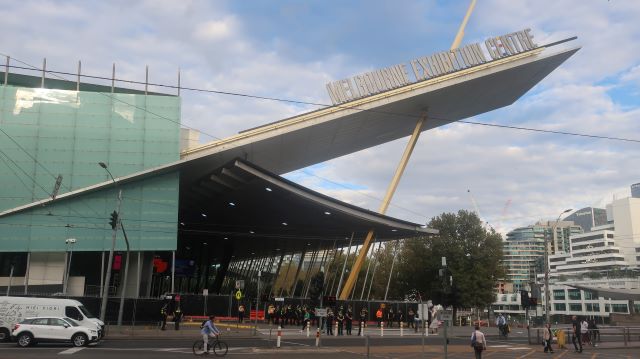
The bank houses in Port Melbourne
The bank houses in Port Melbourne, now so highly valued, were built to house people on modest incomes. How did this unusual pocket of housing come to be built in Port Melbourne?
After the First World War, the need for more housing was pressing. J. L. Murphy, Port Melbourne’s representative in the Legislative Assembly in the 1920s, was a tireless and tenacious advocate for creating housing for workers. The vacant ‘fallow’ land at Fishermans Bend, so close to Port Melbourne, seemed the obvious place for it. However, the land was reserved for Port purposes. The Port Melbourne Council wanted to build housing but couldn’t get the finance.
The first Town Planning Commission report of 1925 recommended a Garden City like scheme in Fishermans Bend.
There was growing support for creating housing in Fishermans Bend.
George Emery, General Manager of the State Savings Bank of Victoria, visited England in 1926 to investigate low cost models of housing. He returned an advocate for the Garden City, a new approach to town planning developed by Ebenezer Howard.
Howard grew up in London in the late 19th century where he witnessed overcrowded living conditions, shocking air quality and squalor.
He went to America where he spent a brief time as a farmer in Nebraska but that didn’t work out. He then worked in Chicago as a shorthand writer.
He absorbed all the debates about living conditions in cities as well as land reform. When he returned to London, he continued working for Hansard as a shorthand writer where he was further exposed to the debates of the day about the dismal living conditions in cities and what might be done to address them. He outlined his vision in Garden Cities of Tomorrow.
He argued that the Garden City could bring the best of the city and the country together to the advantage of both. Cities offered companionship, stimulation, employment and leisure. They were also dirty and overcrowded. The country by contrast “with its canopy of sky, the air that blows upon it, the sun that warms, it the rain and dew that moisten it” was nourishing. However, the country was also characterised by grinding poverty and lack of opportunity.
The Garden City would marry the city and the country.
When cities became too overcrowded, new towns would be created. Each would be self sufficient in employment, open space and industries. Public spirited individuals would set up the charitable organisations that each town would require. Towns would be surrounded by agricultural land that would supply food. They would be close to trains and easy to walk around. There would be no smoke as everything would be electric.
He promoted the Garden City idea/l in many public meetings. People noted the quality of his speaking voice which was persuasive. He went on, with financial backers, to buy agricultural land and create the first garden city at Letchworth in 1903. A fundamental principle of Howard’s Garden City was that all land was to be rented, rather than owned. The rent would go towards all the public investment that would be needed.
Garden Cities of Tomorrow has come to be regarded as one of the most influential books on 20th century planning.
George Emery returned to Australia inspired by the idea of the Garden City. The Bank put the package together, applying the crédit foncier scheme – long term, low interest loans, which had hitherto only applied to agricultural land. The Bank purchased a parcel of land in Fishermans Bend from the State Government. The land had first to be levelled as so much sand had been removed from the Bend.
Bank loans were available only to those earning less than £400 per year. The house and land package was £1,000 – £750 for the house and £150 for the land.
Even though the State Bank scheme was directed at first home owners of modest means, it was beyond the reach of most Port Melbourne workers. Following the 1928 Waterfront strike, work on the waterfront disappeared and even casual, irregular jobs were hard to come by.
The first houses were built around Crichton Ave and Poolman Streets close to the established housing of Port Melbourne. The estate was progressively built westwards. Building stopped during the Depression but resumed after the war. The last houses were built in 1948. Streets are named after George Emery and the architect of the houses, George Burridge Leith. The estate comprises a total of 161 pairs of houses of 6 different designs.
Australia is one of the most urbanised countries in the world. It has been above 80 per cent since the 1960s1. The Government is developing a national urban policy which will bring to the fore our aspirations for cities facing the challenges of the 21st century. The optimum way to combine the best of city and country continues to seek expression in planning today. Bringing housing and employment closer together with open space, walkable neighbourhoods and public transport remains a goal of town planning.
Source:




Anne Callaghan
Very interesting. How progressive those chaps were. It spurs me to become engaged with protection of the Barak Rd estate - a fine fresh air waterfront location for people of lesser means .